Type of resources
Available actions
Topics
Keywords
Contact for the resource
Provided by
Years
Formats
Representation types
Update frequencies
Scale
Resolution
-
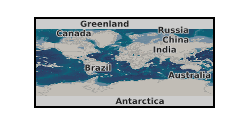
During 2010-11, as part of the Carbon Capture & Storage (CCS) Demonstration Competition process, E.ON undertook a Front End Engineering Design (FEED) study for the development of a commercial scale CCS demonstration plant at Kingsnorth in Kent, South East England. The study yielded invaluable knowledge and the resulting material is available for download here. This chapter presents the Environment and Consents Reports produced during the current FEED stage. One of the key objectives of the FEED study was to develop information across the project chain, from CO2 generation to storage in sufficient detail to enable production of applications for environmental consents. A Consents Philosophy was generated upon commencement of the FEED to develop a programme of work to achieve this objective, and identified the following groups of consents: Power and capture plant: 1989 Electricity Act - Section 36; Onshore pipeline: 1990 Town and Country Planning Act; Offshore Pipeline; Offshore Platform; Storage Consents. Some keys aspects of the FEED Consents study are: There were significant uncertainties at the outset of the project regarding the types of consent required. This was a consequence of the planning consent for Kingsnorth Units 5 and 6 having already been submitted in 2006, new government policy and draft regulatory guidance, and ongoing government consultations on regulatory issues; Many of these issues were resolved, enabling development of consent applications for the integrated power and capture plant and onshore and offshore CO2 pipeline. However in some cases, particularly for the offshore platform and storage, uncertainty remained throughout the project. In these instances the deliverable was an interpretation of the regulatory requirements that will need to be reviewed and taken into account to obtain consents during subsequent stages of the project. Further supporting documents for chapter 9 of the Key Knowledge Reference Book can be downloaded. Note this dataset is a duplicate of the reports held at the National Archive which can be found at the following link - http://webarchive.nationalarchives.gov.uk/20121217150421/http://decc.gov.uk/en/content/cms/emissions/ccs/ukccscomm_prog/feed/e_on_feed_/environment_/environment_.aspx
-

In March 2010, the Scottish CCS (Carbon Capture & Storage) Consortium began an extensive Front End, Engineering and Design (FEED) study to assess what would be required from an engineering, commercial and regulatory, perspective in order to progress the CCS demonstration project at Longannet Power station in Scotland through to construction. The study yielded invaluable knowledge and the resulting material are available for download here. This section of the report provides details of the regulatory work carried out during FEED to achieve the legal requirements of constructing and operating an End-to-End CCS system within European, UK and Scottish legislative frameworks, including implications for consenting of the power plant from which CO2 is to be captured. During the development of the Outline Solution for the UKCCS Demonstration Competition, the Consortium developed a comprehensive Consents Register that tracks month by month progress and captures all relevant Consents, permits and licenses required by the End-to-End CCS chain. A summary of the Consortium progress as of the end of Q1 2011 is provided. Written against a backdrop of significant regulatory change and uncertainty, this report also outlines the process undertaken in identifying consenting risk and provides commentary on the key risks identified, as contained within the project Risk Register. The appropriate summary section from the Feed Close Out Report can be downloaded as a PDF (Consents and permitting.pdf). The main text of the FEED Close Out Report, together with the supporting appendix for this section can be downloaded as PDF files. Note this dataset is a duplicate of the reports held at the National Archive which can be found at the following link - http://webarchive.nationalarchives.gov.uk/20121217150421/http://decc.gov.uk/en/content/cms/emissions/ccs/ukccscomm_prog/feed/scottish_power/consents/consents.aspx
-
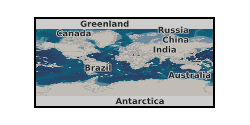
The dataset created includes natural remanent magnetisation (NRM) of archive-half core sections recovered at nine sites (i.e. Sites U1422, U1423, U1424, U1425, U1426, U1427, U1428, U1429, and U1430) during IODP Expedition 346. NRM of the archive-half core sections were measured at every 5-cm interval resolution before and after 20-mT alternating field (AF) demagnetisation treatment. The dataset created also includes NRM of discrete samples taken from working-half core sections (typically one discrete sample per core from the longest hole at each drilling site). NRM of discrete samples were measured before and after a complete stepwise AF demagnetisation routine (up to 60-mT peak AF field). All NRM data collected were used to construct magnetostratigraphy for all sites drilled during Expedition 346. All data have been published in IODP proceedings Volume 346 (http://publications.iodp.org/proceedings/346/346toc.htm).
-

QICS (Quantifying and monitoring environmental impacts of geological carbon storage) was a program funded by the Natural Environment Research Council (NERC), with support from the Scottish Government (May 2010 - December 2014) with two objectives. Firstly, to assess if any significant environmental impact would arise, if a leak from sub-sea, deep geological storage of carbon dioxide occurred. Secondly, to test and recommend tools and strategies for monitoring for (or assuring the absence of) leakage at the sea floor and in overlying waters. This data set provides a short overview of the novel experimental procedure - a world first leakage simulation in the natural environment and describes the experimental set up, sampling strategy including both temporal and spatial details. The data set consists of a pdf containing a text based project and experimental overview, a table outlining the temporal evolution of the experiment, including site selection, set up, baseline, impact and recovery phases and a diagram outlining the spatial sampling strategy. This data set contains an overview document collated by Plymouth Marine Laboratory. This provides the context for a number of specific related QICS datasets submitted to the UKCCS data archive, covering a range of geological, chemical and ecological information. QICS project website: www.bgs.ac.uk/qics/home.html. Blackford et al., 2014. Detection and impacts of leakage from sub-seafloor deep geological carbon dioxide storage. Nature Climate Change 4, 1011-1016. DOI: 10.1038/NCLIMATE2381. Taylor et al., 2015. A novel sub-seabed CO2 release experiment informing monitoring and impact assessment for geological carbon storage. Int J Greenhouse Gas Control. DOI:10.1016/j.ijggc.2014.09.007.
-
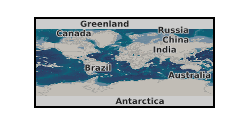
In March 2010, the Scottish CCS (Carbon Capture & Storage) Consortium began an extensive Front End, Engineering and Design (FEED) study to assess what would be required from an engineering, commercial and regulatory, perspective in order to progress the CCS demonstration project at Longannet Power station in Scotland through to construction. The study yielded invaluable knowledge and the resulting material are available for download here. This section of the report provides a summary of key decisions and design changes made during FEED that have resulted from the development of the End-to-End solution and the design works conducted by each of the Consortium Partners. The information described in this section captures the design decisions and changes that have had the most prominent impact on the End-to-End Basis of Design. For each key design change/decision, the background, options considered and the final outcome is described. The ScottishPower CCS Consortium Decision Register can be found in PDFs . The appropriate summary section from the Feed Close Out Report can be downloaded as a PDF (Key FEED decisions.pdf). The main text of the FEED Close Out Report, together with the supporting appendix for this section can be downloaded as PDF files. Note this dataset is a duplicate of the reports held at the National Archive which can be found at the following link - http://webarchive.nationalarchives.gov.uk/20121217150421/http://decc.gov.uk/en/content/cms/emissions/ccs/ukccscomm_prog/feed/scottish_power/feed_decisions/feed_decisions.aspx
-

Geomorphological map of the Sutlej and Yamuna fans, northwestern India. Grant abstract: India is the largest agricultural user of groundwater in the world. The last 40 years has seen a revolutionary shift from large-scale surface water management to widespread groundwater abstraction, particularly in the northwestern states of Punjab, Haryana and Rajasthan. As a result of this, northwestern India is now a hotspot of groundwater depletion, with 'the largest rate of groundwater loss in any comparable-sized region on Earth' (Tiwari et al., 2009). This unsustainable use of groundwater becomes even more challenging when set increasing demands from a burgeoning population and industrialisation, together with potential but poorly understood effects of climate-driven changes in the water cycle. There are a number of innovative socio-economic strategies that can address this issue, including enhanced recharge and subsurface water storage, but their implementation and success depend on solid regional understanding of the geology and hydrogeology of the aquifer systems, and of the patterns and rates of groundwater flow and recharge. What we know about regional groundwater resources comes largely from either low-resolution studies based on satellite data, or from local investigations; there has been no large-scale, cross-state integrated study of the groundwater system. Groundwater in northwestern India is thought to be largely hosted within buried, sandy former river channels, which extend from the Himalayas toward the southwest and are separated by fine-grained muds. Only a few channels are visible at the surface; most are buried and their existence must be inferred. Our approach is founded on the premise that we must first understand the geology and geometry of the aquifer system before we can hope to estimate the way it will respond to a complex set of future stresses. This means that we must be able to describe the locations, sizes, and characteristics of these channels as well as their age and three-dimensional pattern. Once these characteristics are determined, we can forecast the likely future behaviour of the system. In this proposal, we will provide, for the first time, a regional assessment of the aquifer system in northwestern India, along with models for its evolution under changes in the water cycle and in the way in which groundwater is used. Our project will combine expertise in sedimentology, stratigraphy, sediment routing and basin evolution, hydrology, and isotope geochemistry to understand the geological framework of the aquifer system, the ages of the groundwaters within it, and the ways in which groundwater levels are likely to evolve over the next 50 years. The outcomes of the proposal will include (1) a comprehensive data base that covers the northwestern Indian aquifer system, (2) much better understanding of regional sources, ages, and flow rates of groundwater, and (3) a suite of predictions for how the groundwater system will respond to a range of different future scenarios.
-
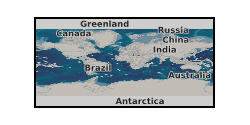
This is a generic powerpoint showing results from azimuthal Q analysis of seismic data collected during the JC152 cruise (Bull et al., 2018). The presentation gives an introduction to the CHIMNEY project and study area. Data from 2 sources (GI guns and Surface sparker) are analysed, giving rise to measurements of attenuation as a function of two-wave time, azimuth and frequency at two locations. The data are inverted using a rock physics model, and probability distributions for matrix permeability and fracture size at the two sites are developed. Reference: Bull, J. M. (2018). Cruise Report – RRS James Cook JC152: CHIMNEY - Characterisation of Major Overburden Pathways above Sub-seafloor CO2 Storage Reservoirs in the North Sea Scanner and Challenger Pockmark Complexes,University of Southampton, 55 pp. Available at: https://eprints.soton.ac.uk/420257/ NERC Grant - Characterization of major overburden leakage pathways above sub-seafloor CO2 storage reservoirs in the North Sea (CHIMNEY)
-

During 2010-11, as part of the Carbon Capture & Storage (CCS) Demonstration Competition process, E.ON undertook a Front End Engineering Design (FEED) study for the development of a commercial scale CCS demonstration plant at Kingsnorth in Kent, South East England. The study yielded invaluable knowledge and the resulting material is available for download here. This chapter is devoted to the transportation and injection infrastructure requirements of the Kingsnorth Carbon Capture and Storage development. This encompasses a 36 inch (outside diameter) pipeline which runs onshore for approx 10 km and offshore in the Southern North Sea for 260 km, a platform in the vicinity of the Hewett field location, and appropriate facilities both for the conditioning of CO2 before pipeline entry and the processing of the CO2 stream prior to injection into the sequestration site. The chapter highlights in particular the following areas:- Critical assumptions; Platform Concept Selection; Transport Solution Selection; Pipeline Key Issues; Pipeline Pre-Commissioning; Temperature; Emergency Shutdown; Personnel Safety; Venting; Flow Assurance Modelling. Throughout the execution of the work described in this chapter significant opportunity was taken to ensure that the interfaces from capture (and compression) to pipeline/platform and to wells/storage were managed closely. This was achieved by cross system interface management meetings organized to consider interface issues and to compare issues raised in separate HAZIDs. The purpose of conceptual design has been to identify the problems to be addressed comprehensively by the next stage of FEED and this suite of reports provides valuable insights to the challenges faced. All aspects of establishing an agreed philosophy for design and operation of a storage and transport system for CCS begin with understanding what the initial CO2 flow conditions will be at the interface between the well perforations and the reservoir (i.e. at the sandstone face at the bottom of the well). Further supporting documents for chapter 6 of the Key Knowledge Reference Book can be downloaded.
-

During 2010-11, as part of the Carbon Capture & Storage (CCS) Demonstration Competition process, E.ON undertook a Front End Engineering Design (FEED) study for the development of a commercial scale CCS demonstration plant at Kingsnorth in Kent, South East England. The study yielded invaluable knowledge and the resulting material is available for download here. This chapter presents the FEED stage Capture and Compression plant technical design. The 'Design Basis for CO2 Recovery Plant' lists the design parameters relating to the capture plant site, the flue gas to be treated, the utilities available, the required life and availability of the plant, and other constraints to be complied with in the capture plant, dehydration and compression design. The details of the processes of capture, compression, and dehydration are best visualised on the Process Flow Diagrams (PFDs) which show the process flows described above together with additional detail of coolers, pumps, and other plant items. Separate PFDs are provided for the capture plant, the compression plant, and the dehydration plant to show the complete flue gas and CO2 flows. Some of the key aspects of the technical design of the Capture and Compression plant are; There are two separate water circuits shown in the quencher with separate extractions of excess water. These have been separated because the recovered quench water is of good enough quality for re-use on the power station, whilst the deep FGD waste water is sent to the water treatment plant; Molecular sieves have been selected as the most appropriate equipment for dehydration of the CO2 prior to pipeline transportation; With the particular layout constraints of the Kingsnorth site, a split layout of the absorption and regeneration equipment is preferred over the compact layout. Further supporting documents for chapter 5 of the Key Knowledge Reference Book can be downloaded. Note this dataset is a duplicate of the reports held at the National Archive which can be found at the following link - http://webarchive.nationalarchives.gov.uk/20121217150421/http://decc.gov.uk/en/content/cms/emissions/ccs/ukccscomm_prog/feed/e_on_feed_/technical/technical.aspx
-
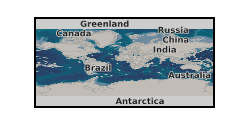
In March 2010, the Scottish CCS (Carbon Capture & Storage) Consortium began an extensive Front End, Engineering and Design (FEED) study to assess what would be required from an engineering, commercial and regulatory, perspective in order to progress the CCS demonstration project at Longannet Power station in Scotland through to construction. The study yielded invaluable knowledge and the resulting material are available for download here. This section of the report contains a high-level monthly summary of the total costs incurred performing the Consortium's FEED study. This information is provided with the aim of enabling potential developers of CCS projects to estimate up front FEED costs. A detailed cost breakdown is also provided for each of the key parties within the Consortium in the form of Cost, Time and Resource (CTR) information in PDFs below, under the following references: UKCCS - KT - S1.0 - SP - 001 ScottishPower CTR Summary; UKCCS - KT - S1.0 - ACC - 001 Aker Clean Carbon CTR Summary; UKCCS - KT - S1.0 - NG - 001 National Grid CTR Summary; UKCCS - KT - S1.0 - Shell - 001 Shell CTR Summary; The detailed CTR information provides a breakdown of the actual labour effort used for the totality of the FEED scope of work, presented by month and by CTR activity, the type of expertise used, the number of hours worked and the associated costs. The split between internal and external costs is shown, together with the original budget estimates developed for each CTR prior to commencing FEED. The appropriate summary section from the Feed Close Out Report can be downloaded as a PDF (FEED cost.pdf). The main text of the FEED Close Out Report, together with the supporting appendix for this section can be downloaded as PDF files. Note this dataset is a duplicate of the reports held at the National Archive which can be found at the following link - http://webarchive.nationalarchives.gov.uk/20121217150421/http://decc.gov.uk/en/content/cms/emissions/ccs/ukccscomm_prog/feed/scottish_power/feed_cost/feed_cost.aspx
 NERC Data Catalogue Service
NERC Data Catalogue Service